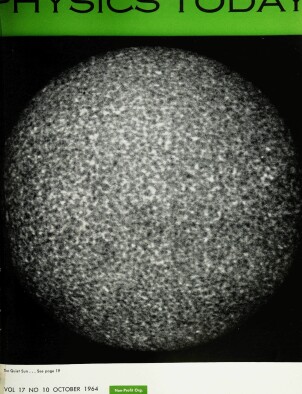APS Division of Electron Physics the first 20 years
DOI: 10.1063/1.3051174
A few months ago, the officers of the Division of Electron Physics decided to look into the possibility of amending its constitution by enlarging the scope of operations to include atomic phenomena, as well as electron and ionic phenomena, in the fields covered by its activities. A committee has been appointed to look into the Division activities, and this fact has given me an opportunity to look up the old records. To my pleasant surprise I found that on April 28, 1944, the Division, then called the “Division of Electron and Ion Optics”, held its very first meeting. A twenty‐year celebration is therefore in order, and this modest talk is offered to look back, and also, if possible, to look forward.
This article is only available in PDF format
More about the Authors
L. Marton. National Bureau of Standards.




